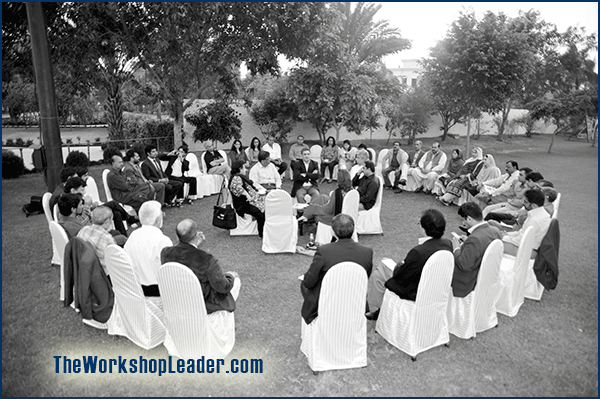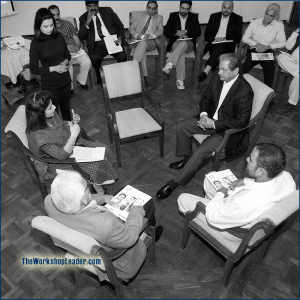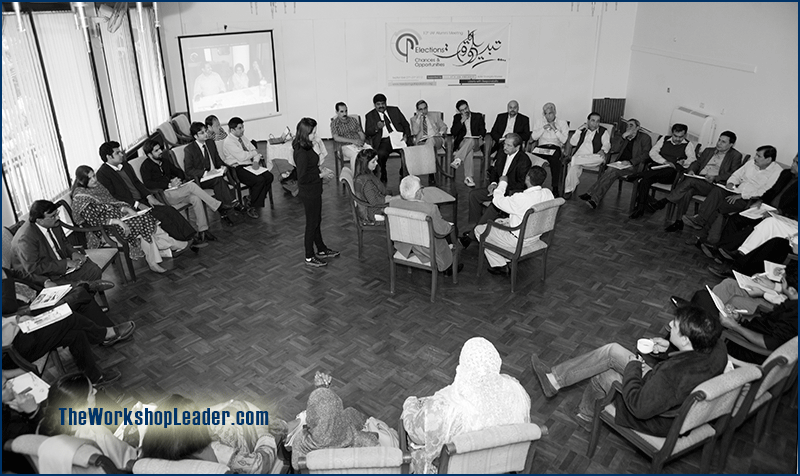Discussion is an exchange of knowledge; an argument an exchange of ignorance.
Robert Quillen (1887—1948)
American Journalist
Discussing in a fishbowl is exciting. It is more focused and dynamic than only panel speaker sessions with Q&A at the end. Here, everybody can follow as well as participate (at least in the open fishbowl). It is a much more interactive and interesting panel moderation technique than the classic panel with parallel chairs.

The name stems from the seating arrangement of participants: listeners form a circle, in the centre of which sit four to five discussants. Thus, they are observed like a goldfish in a bowl.
Procedure
You assemble chairs facing each other for the panelists, i.e. four panelists makes four chairs. The facilitator stands, no chair for him or her. Then you place chairs for the audience in a circle around.
Open Fishbowl
In an open fishbowl two chairs are left empty. Every listener from the outer circle can decide to occupy this chair and participate in the discussion. When this happens one of the other discussants (initially from the outer circle) has to volunteer to leave the inner circle in order to free a chair – after having asked their question. This makes it more exciting and fluid. Additionally, the outer circle can cheer the discussants on.
It turns out that especially politicians who are used to sit on panels (often behind tables) feel much more uncomfortable and pressurized if they feel “surrounded by ordinary people”, i.e. their voters. This equality approach helps to get better statements and a more vivid discussion.
On the other hand participants are much more involved. There is not so much distance, they often feel honored to be “on the panel” themselves. Sometimes this needs a strong moderator to not let this kind of sensation get to their heads.
It’s recommended that the moderator stands during the whole session to keep the overview and mediate between inner and outer circle. The moderator can also take questions from the outer circle or even better encourage people to join the inner circle. He or she can heat the discussion by provoking cheers from the outer circle.
Closed Fishbowl
In a closed fishbowl all discussants’ chairs are occupied. After a given time the first group leaves the circle and a new group takes its place.
All in all it’s much more vivid and much more fun than an ordinary panel discussion. So, whenever the discussion topic suits the method and whenever you have the space go for fishbowl instead of seated panel.



